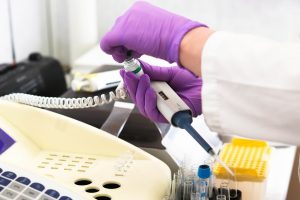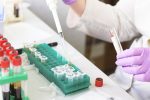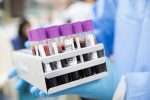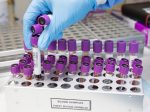
The very first thing that each phlebotomist has to pay attention to is to perform blood collection in a specific way.
Blood samples are collected using collection tubes and this had to be done in a specific order.
The reason for this precise procedure is to avoid cross-contamination of the various additives between tubes.
The process of proper blood collection is known as the order of draw.
We emphasize the importance of the order of draw due to the fact that numerous entry-level phlebotomists or people attending phlebotomy training find this process confusing and difficult to remember.
Order of Draw Table
You have probably noticed that there are so many colored-top blood collection tubes that may cause confusion and difficulties to a newbie.
It is important to remember the correct order, so we have decided to help entry-level phlebotomists by creating a simple chart, mnemonic, and infographic.
If you use the following mnemonic you will easily remember the proper order:
Boys Love Roses; Girls Love Daisies, Lilacs, and Gardenias.
| Blood Draw Order | Tube Color | Name/Additive | # of Inversions |
| 1 | Varies | Blood Cultures | 8 – 10 |
| 2 | Light Blue | Sodium Citrate | 3 – 4 |
| 3 | Red | Clot Activator | 4 – 5 |
| 4 | Gold | SST (Serum Separator Tube) | 4 – 5 |
| 5 | Light Green | Lithium Heparin | 8 – 10 |
| 6 | Dark Green | Sodium Heparin | 8 – 10 |
| 7 | Lavender | EDTA | 8 – 10 |
| 8 | Gray | Sodium Fluoride / Potassium Oxalate | 8 – 10 |
Why is the Order of Draw Important?
The proper order during blood taking procedure is significant for the following few reasons:
- Less time is needed to perform the procedure
- Patient discomfort is reduced
- Complications for a patient are avoided
- Misdiagnosis of a patient is prevented
- Cross-contamination of additives between blood collection tubes is prevented and avoided
What are Inversions?
A phlebotomist has to invert each blood sample by rotating the tube vertically by 180 degrees.
These inversions are obligatory as they enable the mixing of the blood specimen with each tube’s additive.
This ensures that there is no cross-contamination between tubes, being that cross-contamination of the additives can result in misdiagnosis or mistreatment of the patient.








